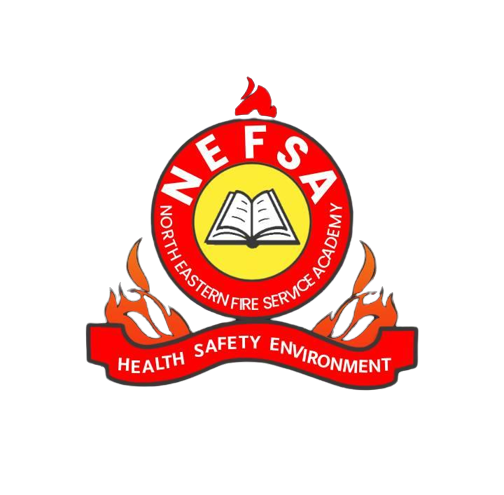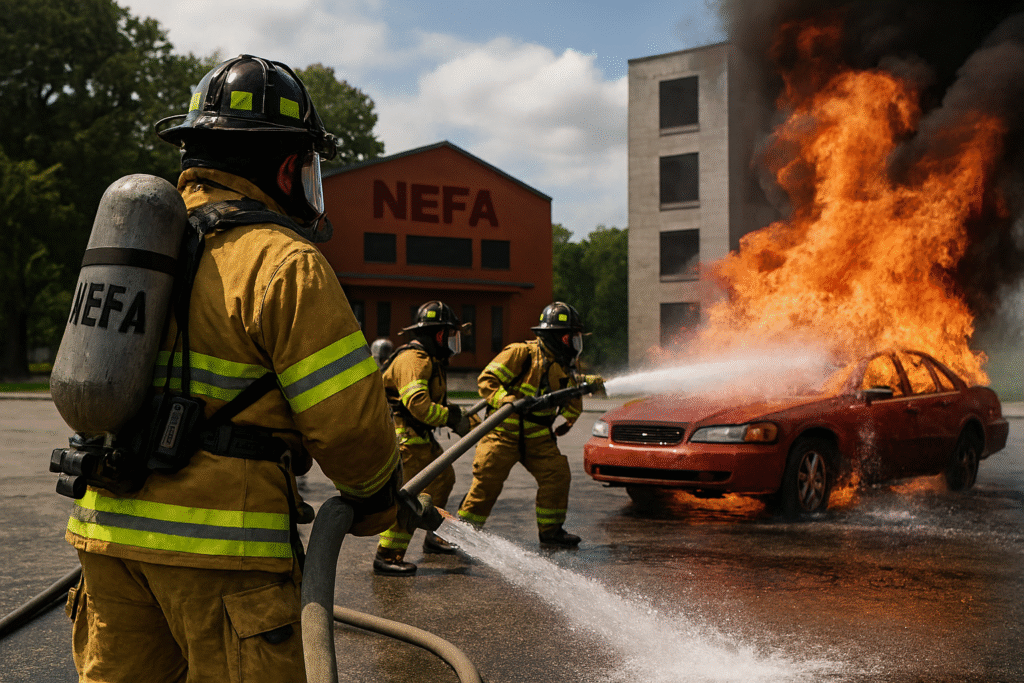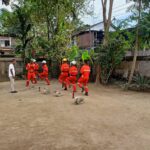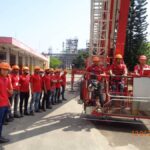Emergencies don’t wait. Effective response depends on training that simulates real conditions, builds muscle memory, and cultivates calm decision-making under pressure. NEFSA Fire Academy (NEFSA) focuses on converting theory into practiced competence blending classroom instruction, live drills, scenario simulation, equipment familiarization, and regulatory compliance training so graduates can perform safely and effectively when it matters most.
This article explains NEFSA’s training philosophy, the practical modules students complete, the learning outcomes employers look for, and how the Academy measures and validates competence for real-world emergency response.
Training philosophy: learn by doing, learn for life
NEFSA’s approach centers on experiential learning. Key principles that guide its programs are:
-
Scenario realism: replicate operational pressures (time, noise, limited visibility) so trainees learn to perform despite stressors.
-
Progressive complexity: start with fundamentals, then increase scenario complexity until students can integrate multiple tasks simultaneously.
-
Competency verification: use objective assessments and checklists to verify skill mastery rather than relying only on attendance.
-
Safety-first culture: maintain rigorous safety protocols during training to teach risk assessment while protecting learners.
-
Interdisciplinary teamwork: cultivate communication and command skills that mirror multi-agency emergency responses.
These principles ensure training translates into reliable behavior during real incidents not just short-term memories.
Core program components and how they map to real emergencies
1. Fire behavior and dynamics (classroom + live demo)
Understanding how fire spreads, heat transfer, smoke movement and flashover conditions is foundational. NEFSA couples classroom theory with controlled live-fire demonstrations so students observe and interpret behavior cues they’ll later encounter in the field.
Real-world mapping: Recognizing early signs of ventilation-limited fires and making tactical decisions to prevent escalation.
2. Breathing apparatus & search-and-rescue drills (hands-on)
Trainees master SCBA (self-contained breathing apparatus) donning/doffing, air management, low-visibility navigation, and victim drag techniques. Repeated drills build the muscle memory required to operate safely while physically stressed.
Real-world mapping: Efficient, safe searching in smoke-filled environments and maintaining situational awareness with limited air supply.
3. Hose handling, water delivery and suppression tactics (live training)
Practical sessions include nozzle techniques, team movements, supply management and coordinated attack/defensive tactics on live fires or realistic props.
Real-world mapping: Rapid, controlled suppression to protect life and limit property damage.
4. Incident Command & communication (tabletop + field exercises)
NEFSA trains students in Incident Command System (ICS) principles, radio protocols, scene management, role assignment and interagency coordination through tabletop exercises and simulation-based incident drills.
Real-world mapping: Clear command structure, fast decisions, and unified multi-unit response during complex incidents.
5. Hazardous materials (HAZMAT) awareness & response basics
Students learn hazard recognition, PPE selection, decontamination protocols and initial containment steps. Emphasis is on detection, safe approach, and handoff to specialized teams.
Real-world mapping: Safe initial actions during spills, gas leaks, or chemical exposures minimizing risk to responders and civilians.
6. Urban search & rescue (USAR) and structural collapse drills
Where applicable, NEFSA includes rope work, shoring basics, breaching, and victim stabilization exercises — often using realistic rubble piles or mock structures.
Real-world mapping: Timely lifesaving interventions in collapsed or complex structural environments.
7. Medical first response & trauma care (integrated)
Basic life support (BLS), trauma stabilization, triage and casualty handling are integrated so responders can provide immediate care until EMS takes over.
Real-world mapping: Reducing mortality and morbidity during the “golden hour.”
8. Fire safety auditing and compliance (legal & documentation)
NEFSA teaches fire safety audits, preparing fire NOCs, and compliance with local codes and standards so graduates can both fight fires and help prevent them.
Real-world mapping: Reducing incident frequency through better prevention and ensuring legal compliance for workplaces and public spaces.
Simulation technology and realistic training environments
NEFSA uses a combination of controlled fire props, smoke houses, confined space simulators, and scenario-based moulage (injury makeup) to create sensory-rich, time-pressured exercises. Key benefits:
-
Controlled risk, high realism: instructors can safely escalate or de-escalate scenarios.
-
Objective performance tracking: timed runs, checklists and video review support after-action learning.
-
Repeatability: trainees run identical scenarios to benchmark improvement.
Video playback and instructor debriefs turn experience into insight: what decisions were made, why, and how to improve next time.
Assessment, certification and competency validation
NEFSA evaluates students through a mix of written tests, practical skill stations, scenario performance, and instructor assessments. Many courses align with recognized standards and certifications (where applicable), ensuring graduates meet industry benchmarks. Typical validation steps include:
-
Skills checklist sign-offs (SCBA, hose evolutions, search techniques).
-
Scenario performance metrics (task completion, safety adherence, communication clarity).
-
Written examinations to confirm theoretical understanding.
-
Fitness and medical clearance to ensure candidates can safely perform operational duties.
This layered validation helps employers trust NEFSA-trained candidates for frontline and compliance roles.
Instructor quality and continuous improvement
Instructor credibility is crucial. NEFSA’s instructors generally have operational experience (municipal or industrial fire service), instructional certifications, and ongoing professional development. The academy also gathers trainee feedback and incident outcome data to iterate on curricula, keeping training relevant as hazards, equipment and regulations evolve.
Soft skills, leadership and psychological preparedness
Real emergencies require more than technical skill. NEFSA trains students in:
-
Stress management and decision-making under pressure
-
Team leadership and following orders
-
Clear, concise radio and face-to-face communication
-
Ethical conduct and scene professionalism
These human factors often determine the difference between good and great responders.
Career pathways and employer readiness
Graduates are prepared for roles such as firefighter, industrial fire safety officer, fire auditor, rescue technician, and safety coordinator. NEFSA often supports placement by connecting learners with municipal services, industrial contractors, airports and private safety teams. Practical competencies, certifications, and documented scenario performance enhance employability.
FAQs (quick answers employers & students search for)
Q: How long before I can respond effectively in real incidents?
A: Foundational competence typically develops over weeks of focused training; full operational readiness combines academy training with on-the-job mentoring and continued drills.
Q: Does NEFSA include medical training?
A: Yes—basic trauma care and BLS modules are usually part of operational training to stabilize casualties before EMS arrives.
Q: Are certifications nationally recognized?
A: NEFSA aligns many modules with national/state standards where applicable; specific certifications depend on course choice and local accreditation frameworks.
Call to Action
If you’re seeking practical, employer-trusted fire training that prioritizes real-world readiness, NEFSA Fire Academy offers structured courses, hands-on scenarios, and placement support. Contact NEFSA to view course schedules, instructor credentials, and enrollment requirements.
Contact us today to know more about admissions, batch schedules, and course details.
Visit: www.nefsaindia.com
Location: Dibrugarh, Assam
For More Blogs:- Click here







